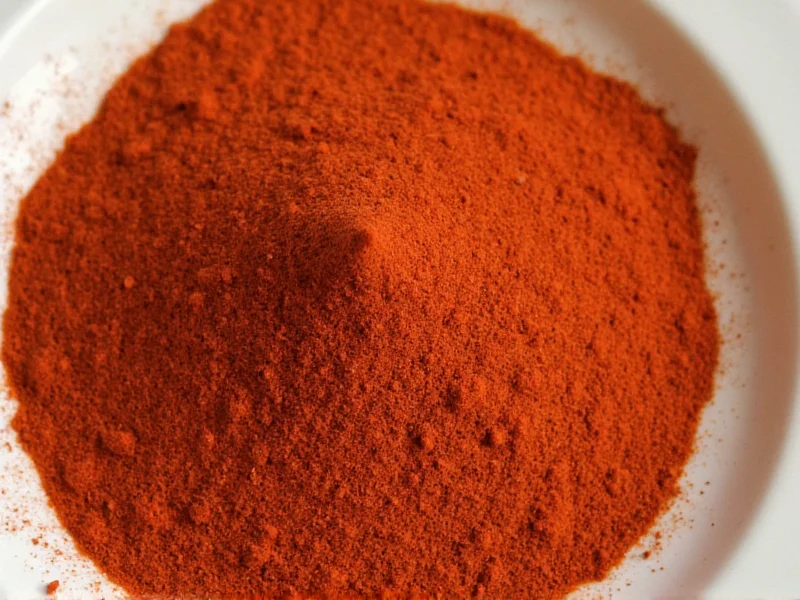Understanding Serrano Peppers: Beyond the Heat
Many home cooks mistakenly search for "serrano spice" expecting a bottled seasoning, but serranos refer specifically to fresh chili peppers (Capsicum annuum) originating from Mexico's Puebla and Hidalgo regions. These 1-4 inch peppers grow upright on the plant and transition from bright green to vibrant red, orange, or yellow as they mature. Unlike dried spice blends, fresh serranos provide immediate culinary versatility with their distinctive heat profile.
Heat Level and Scoville Scale Comparison
When evaluating serrano pepper heat level, these chilies consistently rank between 10,000-23,000 Scoville Heat Units. This places them approximately 2-4 times hotter than standard jalapeños (2,500-8,000 SHU) but substantially milder than habaneros (100,000-350,000 SHU). The heat concentrates in the seeds and white pith, allowing cooks to control spiciness through preparation techniques.
| Pepper Variety | Scoville Heat Units | Compared to Serrano |
|---|---|---|
| Bell Pepper | 0 SHU | 0.0x |
| Jalapeño | 2,500-8,000 SHU | 0.25-0.8x |
| Serrano | 10,000-23,000 SHU | 1x |
| Cayenne | 30,000-50,000 SHU | 1.5-2.5x |
| Habanero | 100,000-350,000 SHU | 5-15x |
Distinctive Flavor Profile
Beyond their serrano pepper heat level, these chilies offer complex flavor notes often described as bright, grassy, and slightly citrusy. Unlike the earthier jalapeño, serranos provide cleaner heat that doesn't overpower dishes. The thinner walls make them ideal for raw applications where jalapeños might add too much bulk. When roasted, serranos develop subtle smoky undertones while maintaining their characteristic sharpness.
Culinary Applications and Substitutions
Chefs value serrano peppers for their ability to enhance dishes without dominating. Traditional Mexican cuisine features them prominently in:
- Fresh salsas (pico de gallo, salsa verde)
- Adobos and marinades
- Guacamole variations
- Seafood ceviche
- Bean and rice dishes
When seeking serrano pepper substitutes, consider these options based on availability and desired heat level:
- For similar heat: Fresh green Thai chilies (use 1:1 ratio)
- Milder option: Jalapeños (use 1.5x quantity)
- Hotter alternative: Red Fresno peppers (use 0.75x quantity)
- Dried option: Chipotle powder (1/8 teaspoon per pepper)
Serrano vs Jalapeño: Key Differences
The serrano vs jalapeno comparison reveals significant differences beyond heat level. Serranos grow upright on the plant while jalapeños hang down. Serranos have thinner walls and less internal volume, making them better suited for raw applications. Their flavor profile is brighter and less earthy than jalapeños. In terms of availability, jalapeños appear year-round in most supermarkets while serranos have more seasonal availability, peaking in summer and early fall.
Safe Handling Practices
Proper handling serrano peppers safely requires precautions due to their significant capsaicin content. Always wear disposable gloves when preparing multiple peppers, and avoid touching your face. Remove seeds and membranes with a small spoon rather than knives to minimize contact. After handling, wash cutting boards and utensils with hot, soapy water—alcohol or vinegar solutions work better than water alone for removing residual capsaicin from surfaces.
Storage Techniques for Maximum Freshness
Understanding serrano pepper storage methods extends their shelf life significantly. Unwashed peppers stored in a perforated plastic bag in the refrigerator's crisper drawer maintain quality for 2-3 weeks. For longer preservation, roast and freeze whole peppers in airtight containers (up to 6 months), or pickle them in vinegar-based solutions (3-4 months refrigerated). Never store fresh serranos at room temperature, as they deteriorate rapidly.
Growing Your Own Serranos
Gardeners interested in serrano pepper growing tips should note these chilies thrive in warm climates with full sun exposure. Start seeds indoors 8-10 weeks before last frost, transplanting outdoors when soil reaches 70°F (21°C). Plants reach 24-36 inches tall and produce abundant upright peppers. Harvest when peppers snap easily from the stem—typically 70-80 days after transplanting. Unlike some chilies, serranos don't require stress watering to maximize yield.
Frequently Asked Questions
Are serrano peppers hotter than jalapeños?
Yes, serrano peppers are consistently hotter than jalapeños, measuring 10,000-23,000 Scoville Heat Units compared to jalapeños' 2,500-8,000 SHU. This makes serranos approximately 2-4 times hotter, though individual pepper heat can vary based on growing conditions and maturity.
Can I substitute serrano peppers for jalapeños in recipes?
You can substitute serranos for jalapeños, but use approximately half the quantity due to their higher heat level. For raw applications like salsas, serranos provide a cleaner, brighter heat. In cooked dishes, the flavor difference becomes less pronounced, though serranos maintain more of their distinctive character.
Why do my hands burn after handling serrano peppers?
Capsaicin, the compound that creates heat in serrano peppers, binds to skin receptors causing burning sensations. Always wear gloves when handling multiple peppers. If exposed, wash hands thoroughly with soap and cold water (hot water opens pores), then apply milk or yogurt to neutralize the capsaicin. Avoid touching your face until hands are completely clean.
How can I reduce the heat of serrano peppers in a dish?
To reduce serrano pepper heat in prepared dishes, add dairy products like sour cream or yogurt, which contain casein that breaks down capsaicin. Acidic ingredients like lime juice can also help balance heat perception. For future preparations, remove all seeds and white membranes where capsaicin concentrates, and consider blanching peppers briefly in boiling water before use.
Do serrano peppers change color as they ripen?
Yes, serrano peppers transition from bright green to vibrant red, orange, or yellow as they mature on the plant. Fully ripe red serranos develop slightly sweeter, more complex flavors while maintaining similar heat levels. Many Mexican recipes specifically call for red serranos in traditional preparations like adobos and moles.











 浙公网安备
33010002000092号
浙公网安备
33010002000092号 浙B2-20120091-4
浙B2-20120091-4